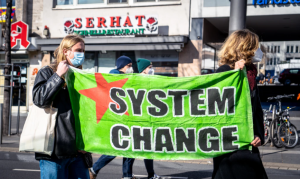
Giving Back or Widening Gaps? The Impact of Corporate Donations on Employee Income Inequality
Corporate social responsibility (CSR) has become a buzzword in modern business. Companies around the world now recognize that their responsibilities go beyond profit margins. They must also consider their impact on society. Public welfare donations—charitable contributions made by businesses—are often seen as the highest form of CSR. They boost a company’s reputation, fulfill ethical and legal obligations, and contribute to community well-being. But beneath the surface, there’s more to this story. Recent research sheds light on an unintended consequence of these well-meaning donations: increasing income inequality within companies.
The Two Faces of Corporate Giving
It’s easy to assume that when companies donate to public causes, everyone wins. The community benefits from the generosity, and companies enjoy goodwill and tax breaks. Yet, this study reveals a surprising downside: public welfare donations may actually widen the income gap between management and ordinary employees.
How does this happen? The benefits of corporate donations aren’t distributed evenly. Management, with its greater bargaining power, often receives a larger share of the rewards—such as salary increases and bonuses—while ordinary employees see little or no change in their pay.
Behind the Scenes: Rent Sharing and Income Inequality
The study delves into the mechanics of how corporate donations affect internal wage structures. When companies engage in public welfare donations, they benefit in two main ways: tax deductions and enhanced corporate performance. For example, under China’s tax laws, donations up to a certain percentage of a company’s profits are deductible. This boosts a company’s bottom line, creating what economists call “excess rent”—essentially, extra income available for distribution.
In theory, this rent could be shared across all employees, improving compensation for both management and ordinary workers. But here’s where the imbalance occurs: senior management typically has more negotiating power, enabling them to claim a larger slice of this pie. In contrast, ordinary employees with less bargaining leverage often receive little or no share of the benefits.
A Closer Look at the Numbers
The researchers analyzed data from Chinese A-share listed companies between 2011 and 2020. They found that as companies increased their public welfare donations, the income gap between management and ordinary employees grew. Specifically, for every increase in public donations, management salaries rose significantly, while the salaries of ordinary employees remained largely stagnant.
For instance, if a company increased its donations, the management’s income grew by approximately 6.5%, but the effect on ordinary employees’ salaries was minimal—only about 0.8%. This disparity ultimately contributed to the widening of the internal income gap.
Why Does This Matter?
Income inequality within companies has broader social implications. When the gap between the highest-paid executives and the average worker becomes too wide, it can lead to lower morale, reduced productivity, and even social unrest. Employees who feel undervalued may be less motivated, leading to higher turnover and a decrease in overall company performance. On a societal level, growing income inequality can fuel resentment and exacerbate social divisions.
Moreover, these findings challenge the widely held belief that public welfare donations are an unequivocal good. While donations certainly benefit the community and help companies fulfill their CSR obligations, this research suggests that without proper safeguards, they can also exacerbate inequality within the workplace.
The Role of Company Structure
The study also highlighted differences between state-owned and non-state-owned enterprises. In state-owned companies, where wage structures are more tightly controlled, the income gap between management and ordinary employees was smaller, even with increased donations. Non-state-owned enterprises, on the other hand, showed a much larger disparity. This suggests that external factors, such as government oversight and company structure, play a role in mitigating or exacerbating the effects of public welfare donations on income inequality.
Another factor at play is senior management’s ownership stake. In companies where executives held a significant share of ownership, the income gap was even more pronounced. This is because executives with ownership stakes have a dual role—they are both managers and part-owners—giving them even more influence over how company profits (including the benefits of donations) are distributed.
Moving Forward: Balancing Generosity with Fairness
So, what can be done to ensure that corporate donations benefit all employees, not just those at the top? The researchers suggest several strategies. First, companies should develop more equitable compensation systems that ensure a fairer distribution of profits. Limiting the rise of executive compensation, while enhancing the bargaining power of ordinary employees, could help to narrow the income gap.
Second, companies should introduce policies that promote transparency in wage distribution. For instance, more comprehensive reporting on the ratio of executive to employee pay could encourage fairer practices and reduce wage disparities.
Lastly, policymakers could consider adjusting tax policies to address this issue. While tax deductions for corporate donations incentivize generosity, additional safeguards may need to ensure that these benefits are shared more equitably within companies.
A Call to Action for Public Health Practitioners and Researchers
This research has important implications not just for businesses but also for public health practitioners and researchers. Income inequality is a well-established social determinant of health, contributing to poorer outcomes across populations. If corporate donations—intended to benefit society—are widening income gaps within companies, this could exacerbate health disparities. As public health professionals, it’s important to consider the ripple effects of corporate behavior on the health and well-being of communities.
Public health professionals can ensure that corporate social responsibility truly benefits everyone by advocating for fairer wage practices and greater transparency.
Join the Conversation
What are your thoughts on the relationship between corporate donations and income inequality? Do you believe companies should implement more transparent wage practices to ensure fairer distribution of profits? Share your experiences or opinions in the comments below or join the conversation on social media!
Be Part of the Change – Get Weekly Updates!
Stay informed and connected. Subscribe for free and share this blog to make a difference in public health with others. If you liked this blog, please share it! Your referrals help This Week in Public Health reach new readers.



